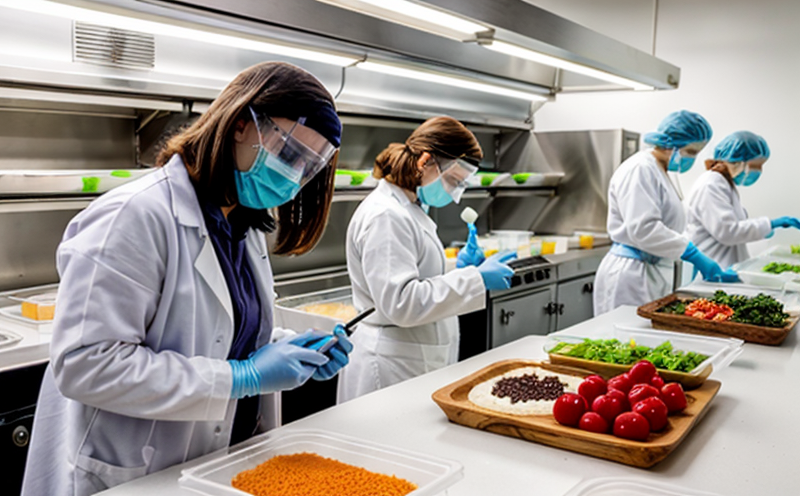FDA BAM Chapter 17 Vibrio Detection in Seafood
The FDA Bacteriological Analytical Manual (BAM) Chapter 17 provides a comprehensive protocol for detecting Vibrio species, particularly in seafood. This testing is crucial due to the potential health risks associated with consuming seafood contaminated with these pathogens. The presence of Vibrio spp., such as Vibrio parahaemolyticus, can lead to severe gastrointestinal symptoms and even life-threatening complications.
The FDA's stringent guidelines are designed to ensure that food products meet the highest safety standards, protecting public health. Compliance with these protocols is not only a regulatory requirement but also an essential step in maintaining brand reputation and consumer trust. Understanding the intricacies of the test can help stakeholders navigate the complexities involved in ensuring product safety.
The testing process begins with proper sampling and specimen preparation. Specimens must be collected from various stages of processing, including raw seafood products and finished goods. Samples should be handled under controlled conditions to minimize contamination and ensure accurate results. The samples are then prepared according to BAM Chapter 17 guidelines, which specify the appropriate media and incubation times.
The detection method involves a series of steps that include enrichment, isolation, and identification using biochemical tests or molecular methods like polymerase chain reaction (PCR). These methods help differentiate between various Vibrio species based on their specific characteristics. The accuracy and precision of these tests are paramount in ensuring the reliability of the results.
The importance of this testing cannot be overstated, especially given the global nature of seafood trade. Regulatory authorities worldwide recognize the FDA's standards and often align their own guidelines with those set forth by BAM. This alignment ensures consistency across borders, facilitating international trade while maintaining safety standards.
- International acceptance: The FDA’s BAM Chapter 17 is widely recognized by countries that import or export seafood products. Compliance helps ensure seamless regulatory processes and reduces the risk of product recall or ban.
- Regulatory compliance: Adhering to these protocols ensures that food producers meet legal requirements, safeguarding public health and protecting against potential legal consequences.
- Consumer trust: By ensuring the safety of seafood products, this testing builds confidence among consumers, fostering long-term relationships with customers.
In conclusion, FDA BAM Chapter 17 Vibrio Detection in Seafood is a critical process that underscores the importance of stringent quality control measures. It is essential for food producers to understand and adhere to these guidelines to ensure product safety and compliance with international standards.
Why It Matters
The detection of Vibrio species in seafood is vital for several reasons, primarily related to public health. Vibrio spp., especially Vibrio parahaemolyticus, are known to cause severe gastrointestinal illnesses such as gastroenteritis and cholera-like symptoms. These pathogens can thrive in warm seawater and contaminate seafood products during various stages of production.
The FDA has implemented stringent protocols, including BAM Chapter 17, to mitigate these risks by providing a standardized method for detecting Vibrio spp. Compliance with these guidelines ensures that food producers can identify and eliminate potential sources of contamination before the product reaches consumers. This proactive approach not only protects public health but also helps maintain consumer trust in food safety.
Moreover, international trade demands adherence to recognized standards such as those set by the FDA. Many countries rely on BAM Chapter 17 for their own regulatory frameworks, ensuring that imported seafood meets stringent safety criteria. This global recognition enhances the credibility of the testing process and simplifies exportation processes.
In summary, the importance of FDA BAM Chapter 17 Vibrio Detection in Seafood cannot be overstated. It is a critical component of food safety protocols that safeguard public health, enhance consumer trust, and facilitate international trade compliance.
Benefits
The benefits of adhering to the FDA BAM Chapter 17 protocol for Vibrio detection in seafood are manifold. Primarily, this testing ensures the highest standards of food safety, protecting consumers from potential health risks associated with vibriosis. By identifying and eliminating contamination early in the production process, food producers can significantly reduce the likelihood of product recalls and associated financial losses.
Compliance with these guidelines also enhances a company's reputation for quality and reliability, fostering long-term relationships with customers and stakeholders. This positive image is crucial in today’s competitive market, where consumer trust plays a pivotal role in brand success.
Furthermore, adherence to international standards facilitates smoother exportation processes by ensuring that imported seafood meets the stringent requirements of importing countries. This simplifies regulatory compliance and reduces the risk of product being seized or banned at borders.
The FDA BAM Chapter 17 protocol also aids in regulatory compliance, helping food producers navigate complex legal frameworks with ease. By following these guidelines, companies can avoid potential fines, penalties, and other legal repercussions associated with non-compliance. This not only protects the company’s legal standing but also ensures that all stakeholders are operating within a framework of transparency and accountability.
In summary, the benefits of FDA BAM Chapter 17 Vibrio Detection in Seafood extend beyond mere compliance; they encompass enhanced product safety, improved brand reputation, simplified exportation processes, and robust regulatory adherence. These factors collectively contribute to the overall success and sustainability of food production enterprises.





